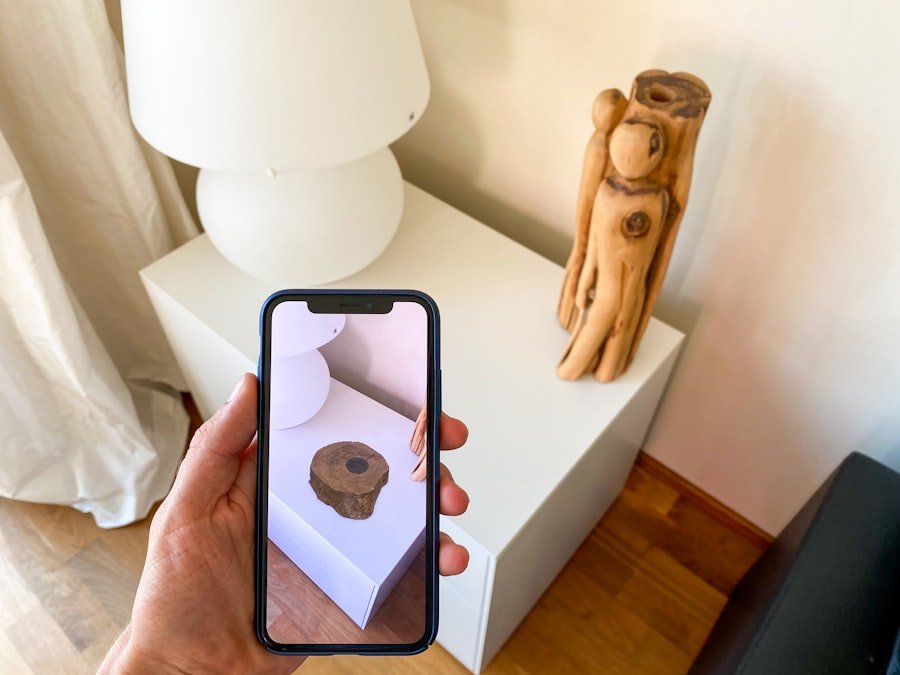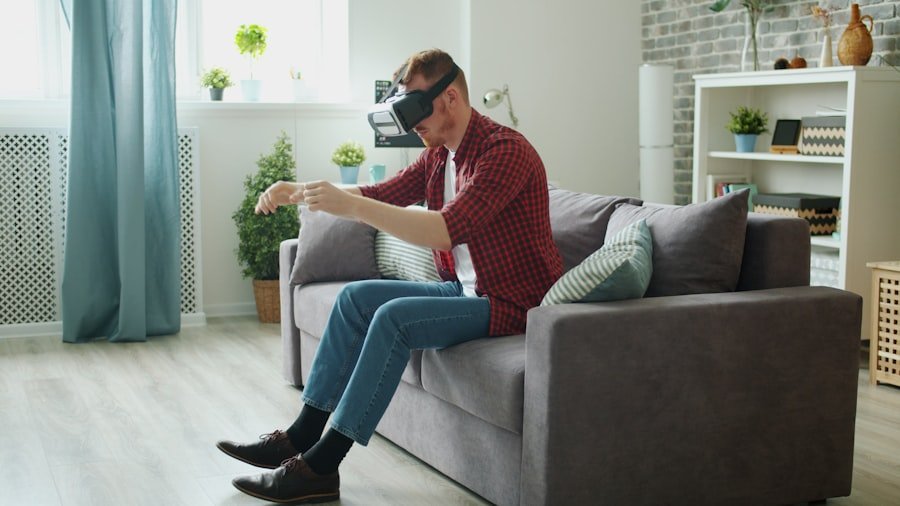Augmented Reality (AR) is not just a buzzword; it’s a transformative technology reshaping the marketing landscape. By overlaying digital information—be it images, sounds, or other data—onto the real world, AR creates immersive experiences that captivate consumers. This technology bridges the gap between the physical and digital realms, allowing brands to engage customers in ways that traditional marketing methods simply cannot.
For marketers, AR offers a unique opportunity to create memorable interactions that resonate with consumers on a deeper level. The essence of AR in marketing lies in its ability to enhance storytelling. Instead of merely presenting a product, brands can create narratives that allow consumers to visualize how a product fits into their lives.
For instance, furniture retailers like IKEA have successfully utilized AR to let customers visualize how a piece of furniture would look in their own homes before making a purchase. This not only aids decision-making but also fosters a sense of connection between the consumer and the brand.
Key Takeaways
- Augmented Reality (AR) in marketing is the integration of digital information with the physical environment to create an interactive and immersive experience for consumers.
- The evolution of AR in marketing has seen advancements in technology, making it more accessible and affordable for brands to incorporate into their campaigns.
- AR has a significant impact on consumer engagement by providing a unique and personalized experience that captures attention and drives interaction with the brand.
- Brands are leveraging AR for marketing campaigns by creating interactive product experiences, virtual try-on features, and gamified brand experiences to enhance customer engagement.
- AR plays a crucial role in enhancing customer experience by providing a more immersive and interactive way for consumers to interact with products and brands.
The Evolution of Augmented Reality in Marketing
The journey of AR in marketing has been nothing short of remarkable. Initially, AR was confined to niche applications and experimental projects, often viewed as a novelty rather than a viable marketing tool. However, as smartphone technology advanced and became ubiquitous, AR began to gain traction.
The launch of ARKit by Apple and ARCore by Google in 2017 marked a significant turning point, providing developers with the tools needed to create sophisticated AR experiences. As brands began to recognize the potential of AR, we witnessed a surge in innovative applications across various industries. From interactive advertisements to virtual try-ons, AR has evolved into a powerful medium for engagement.
Companies like Sephora and L’Oréal have embraced AR to offer virtual makeup trials, allowing customers to experiment with different looks without the need for physical products. This evolution reflects a broader trend: as consumers become more tech-savvy, their expectations for interactive and personalized experiences continue to rise.
The Impact of Augmented Reality on Consumer Engagement

The impact of AR on consumer engagement is profound. Research indicates that AR experiences can increase consumer engagement by up to 70%, significantly enhancing brand recall and purchase intent. This heightened engagement stems from the interactive nature of AR, which encourages users to actively participate rather than passively consume content.
When consumers can interact with a brand in an immersive environment, they are more likely to form emotional connections that drive loyalty. Moreover, AR fosters a sense of immediacy and relevance. For example, during the COVID-19 pandemic, many brands turned to AR to maintain engagement with consumers who were confined to their homes.
By offering virtual experiences—such as home workouts or virtual tours—brands not only kept their audience engaged but also demonstrated adaptability in challenging times. This ability to pivot quickly and leverage technology for consumer engagement is crucial in today’s fast-paced market.
How Brands are Leveraging Augmented Reality for Marketing Campaigns
Brands across various sectors are harnessing the power of AR to create innovative marketing campaigns that stand out in crowded marketplaces. For instance, automotive companies like BMW have developed AR applications that allow potential buyers to explore vehicle features in detail through their smartphones. By providing an interactive experience that showcases the car’s capabilities, these brands can effectively communicate value propositions that resonate with tech-savvy consumers.
In the fashion industry, brands like Gucci have launched AR-enabled apps that allow users to virtually try on shoes and accessories. This not only enhances the shopping experience but also reduces return rates—a significant pain point for online retailers. By integrating AR into their marketing strategies, these brands are not just selling products; they are creating experiences that foster brand loyalty and encourage repeat purchases.
The Role of Augmented Reality in Enhancing Customer Experience
AR plays a pivotal role in enhancing customer experience by providing personalized interactions that cater to individual preferences. When consumers can visualize products in their own environments or try them on virtually, they feel more empowered in their purchasing decisions. This personalization is key; it transforms the shopping experience from a transactional interaction into a meaningful journey.
Furthermore, AR can streamline the customer journey by reducing friction points. For example, beauty brands can use AR to guide customers through complex product selections by offering tailored recommendations based on skin tone or preferences. This not only simplifies the decision-making process but also builds trust between the brand and the consumer, as customers feel understood and valued.
Challenges and Opportunities in Implementing Augmented Reality Marketing

While the potential of AR in marketing is immense, brands must navigate several challenges when implementing this technology. One significant hurdle is the cost associated with developing high-quality AR experiences. Creating engaging content requires investment in both technology and talent, which can be daunting for smaller businesses or startups with limited budgets.
However, these challenges also present opportunities for innovation. As AR technology continues to evolve, more accessible tools and platforms are emerging that enable brands of all sizes to create compelling experiences without breaking the bank. Additionally, as consumer demand for interactive content grows, brands that invest in AR now will likely gain a competitive edge in the future.
The Future of Augmented Reality in Marketing
The future of AR in marketing is bright and full of possibilities. As technology advances, we can expect even more sophisticated applications that integrate seamlessly into consumers’ daily lives. For instance, advancements in artificial intelligence (AI) could enable hyper-personalized AR experiences that adapt in real-time based on user behavior and preferences.
Moreover, as 5G technology becomes more widespread, the potential for AR will expand exponentially. Faster internet speeds will allow for more complex and data-rich experiences without lag, making AR applications smoother and more engaging. Brands that stay ahead of these trends will be well-positioned to capture consumer attention and drive engagement.
Case Studies of Successful Augmented Reality Marketing Campaigns
Several brands have successfully leveraged AR to create impactful marketing campaigns that serve as benchmarks for others looking to enter this space. One notable example is Pepsi’s “Unbelievable” campaign, which featured an AR-enabled bus shelter that transformed ordinary waiting times into extraordinary experiences. Commuters were treated to surreal scenarios—like aliens invading or tigers roaming—creating buzz and driving social media engagement.
Another compelling case is Nike’s “Nike Fit” app, which uses AR technology to help customers find their perfect shoe size by scanning their feet with their smartphones. This innovative approach not only enhances customer satisfaction but also reduces return rates—a win-win for both consumers and the brand.
The Integration of Augmented Reality with Social Media Marketing
Social media platforms are increasingly becoming fertile ground for AR marketing initiatives. With features like Instagram’s filters and Snapchat’s lenses, brands can create engaging content that encourages user interaction and sharing. This integration allows brands to tap into existing social networks while providing users with fun and immersive experiences.
For example, cosmetics brands like Maybelline have utilized Instagram filters that allow users to try on makeup virtually before purchasing. This not only drives engagement but also encourages user-generated content as consumers share their virtual looks with friends and followers—amplifying brand visibility organically.
The Importance of Data and Analytics in Augmented Reality Marketing
Data and analytics play a crucial role in optimizing AR marketing strategies. By tracking user interactions with AR experiences, brands can gain valuable insights into consumer behavior and preferences. This data can inform future campaigns, helping marketers refine their approaches based on what resonates most with their audience.
Moreover, leveraging analytics allows brands to measure the effectiveness of their AR initiatives against key performance indicators (KPIs). Whether it’s tracking engagement rates or conversion metrics, data-driven decision-making ensures that marketing efforts are aligned with business objectives and consumer expectations.
Best Practices for Implementing Augmented Reality in Marketing Strategies
To successfully implement AR into marketing strategies, brands should adhere to several best practices. First and foremost, it’s essential to prioritize user experience; any AR application should be intuitive and easy to navigate.
Additionally, brands should focus on storytelling—AR should enhance narratives rather than distract from them. By creating cohesive stories that resonate with target audiences, brands can foster deeper connections and drive engagement. Finally, continuous testing and iteration are vital for success in AR marketing.
Brands should gather feedback from users and analyze performance data regularly to refine their strategies over time. By staying agile and responsive to consumer needs, brands can maximize the impact of their AR initiatives. In summary, augmented reality is revolutionizing marketing by creating immersive experiences that engage consumers like never before.
As technology continues to evolve, brands must embrace this opportunity while navigating challenges with creativity and strategic foresight. The future of marketing lies in understanding how to leverage these tools effectively—those who do will undoubtedly lead the charge into a new era of consumer engagement.
In the rapidly evolving landscape of digital marketing, augmented reality (AR) is emerging as a powerful tool for brands to engage with consumers in innovative ways.
For businesses looking to integrate AR into their marketing strategies, understanding the broader context of digital marketing is crucial. An insightful resource that complements this topic is the article on Digital Marketing Strategy. This article provides a comprehensive overview of how digital marketing strategies can be developed and optimized, offering valuable insights for brands aiming to leverage AR effectively within their marketing mix.
FAQs
What is augmented reality (AR)?
Augmented reality (AR) is a technology that superimposes digital information such as images, videos, or 3D models onto the real world, typically viewed through a smartphone or AR glasses.
How is augmented reality (AR) used in marketing?
AR is used in marketing to create interactive and engaging experiences for consumers. It allows brands to overlay digital content onto physical products or environments, providing a unique way to showcase products and engage with customers.
What are some examples of augmented reality (AR) in marketing?
Examples of AR in marketing include virtual try-on experiences for cosmetics and clothing, interactive product demonstrations, AR-powered games and contests, and location-based AR experiences that drive foot traffic to physical stores.
What are the benefits of using augmented reality (AR) in marketing?
The benefits of using AR in marketing include increased customer engagement, enhanced brand perception, the ability to provide immersive and personalized experiences, and the potential to drive sales and conversions.
What are the challenges of implementing augmented reality (AR) in marketing?
Challenges of implementing AR in marketing include the need for technical expertise and resources, ensuring a seamless user experience, and the potential for consumer privacy concerns related to data collection through AR experiences.



